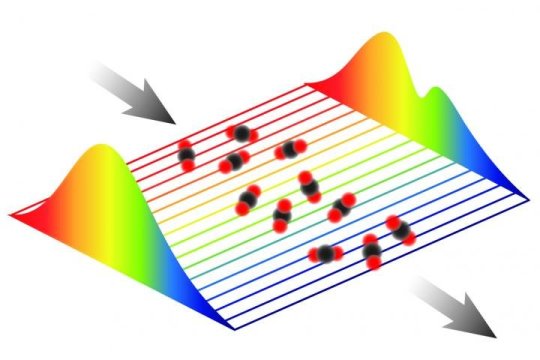[ad_1]
University of Adelaide researchers have created a laser that can “smell” different gases within a sample.
Applications for the new device lie not just in environmental monitoring and detecting industrial contamination, but may eventually be used to diagnose disease by “smelling” the breath.
The researchers liken the ability of the laser to differentiate between different gas compounds in a sample to the sensitive nose of a bloodhound. But rather than smell, the device uses patterns of light absorption to measure the composition of the sample.
From the University’s Institute for Photonics and Advanced Sensing (IPAS), the researchers report in the journal Physical Review Applied that the laser can measure the amount of carbon dioxide in a gas sample in under one second, with high accuracy and precision.
“The ability to rapidly measure gas composition to such high accuracy is cutting edge,” says lead author Sarah Scholten, PhD candidate in the University’s School of Physical Sciences. “With further development, it opens the way for real-time and inexpensive monitoring and analysis that can be carried out in the field, or in the doctor’s surgery, by non-specialist operators.”
The device exploits a Nobel-prize winning technology, developed by US and German scientists, called an ‘optical frequency comb’. This ‘laser comb’ generates millions of different light frequencies or colours at once.
The researchers pass this special light through a sample of gas where each gas molecule absorbs a distinctive set of colours. The pattern of light absorption is a unique fingerprint of the gas composition of the sample.
“This first work aims at atmospheric monitoring, however, the technique is broadly applicable and offers an avenue for near-universal concentration measurements,” says Dr Chris Perrella, Postdoctoral Fellow.
The group now aims to use the laser comb to unravel the chemical composition of the exhaled breath — in this much more complex situation they hope to find tell-tale chemical signs that point to underlying disease. The ultimate goal is to use the laser as a screening tool — to discover a serious illness even before the patient is aware of the condition.
Story Source:
Materials provided by University of Adelaide. Note: Content may be edited for style and length.
[ad_2]















